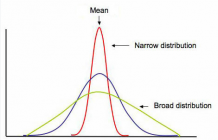I am wondering what people use for lubing the case mouth ID prior to seating the bullet for accuracy purposes?
Preface: Cases are annealed after each firing. The only cleaning operation I do to the case mouth ID prior to seating the bullet is to brush them out with a nylon brush (i.e. no tumbling, no ultrasonic cleaning, etc.), thus presumably leaving some carbon in place. Bullets are seated using an arbor press and a Wilson seating die.
For bullet seating, I started out using powder graphite on the case mouth ID brushed on dry with a bore mop. I also coated the bullet shank with the same dry powder using a small container of ceramic beads.
I then switched over to using moly powder for the case mouth and bullet shank, applied in the same way, and I think I noticed a slightly easier seating force.
One time, I got lazy and left the Imperial Sizing Wax in the mouth ID after an expanding operation, and for sure noticed an easier seating force, and also observed generally lower ES's. But, the ISW has obvious problems such as powder sticking to it, and the possibility of some powder contamination. But the lower ES's caught my attention, making me think that maybe there is a better way to lube the case mouth ID than what I had been doing.
I did a search on the subject. I see lots of threads for lubing the case mouth OD for sizing purposes, and some threads on lubing the case mouth ID to prevent bullet weld (for example: https://forum.accurateshooter.com/threads/lube-inside-case-mouth.4064505/), but I found pretty much nothing in regards to accuracy. I am interested in hearing what other people do to lube the case mouth ID for best accuracy?
Preface: Cases are annealed after each firing. The only cleaning operation I do to the case mouth ID prior to seating the bullet is to brush them out with a nylon brush (i.e. no tumbling, no ultrasonic cleaning, etc.), thus presumably leaving some carbon in place. Bullets are seated using an arbor press and a Wilson seating die.
For bullet seating, I started out using powder graphite on the case mouth ID brushed on dry with a bore mop. I also coated the bullet shank with the same dry powder using a small container of ceramic beads.
I then switched over to using moly powder for the case mouth and bullet shank, applied in the same way, and I think I noticed a slightly easier seating force.
One time, I got lazy and left the Imperial Sizing Wax in the mouth ID after an expanding operation, and for sure noticed an easier seating force, and also observed generally lower ES's. But, the ISW has obvious problems such as powder sticking to it, and the possibility of some powder contamination. But the lower ES's caught my attention, making me think that maybe there is a better way to lube the case mouth ID than what I had been doing.
I did a search on the subject. I see lots of threads for lubing the case mouth OD for sizing purposes, and some threads on lubing the case mouth ID to prevent bullet weld (for example: https://forum.accurateshooter.com/threads/lube-inside-case-mouth.4064505/), but I found pretty much nothing in regards to accuracy. I am interested in hearing what other people do to lube the case mouth ID for best accuracy?
Last edited:












